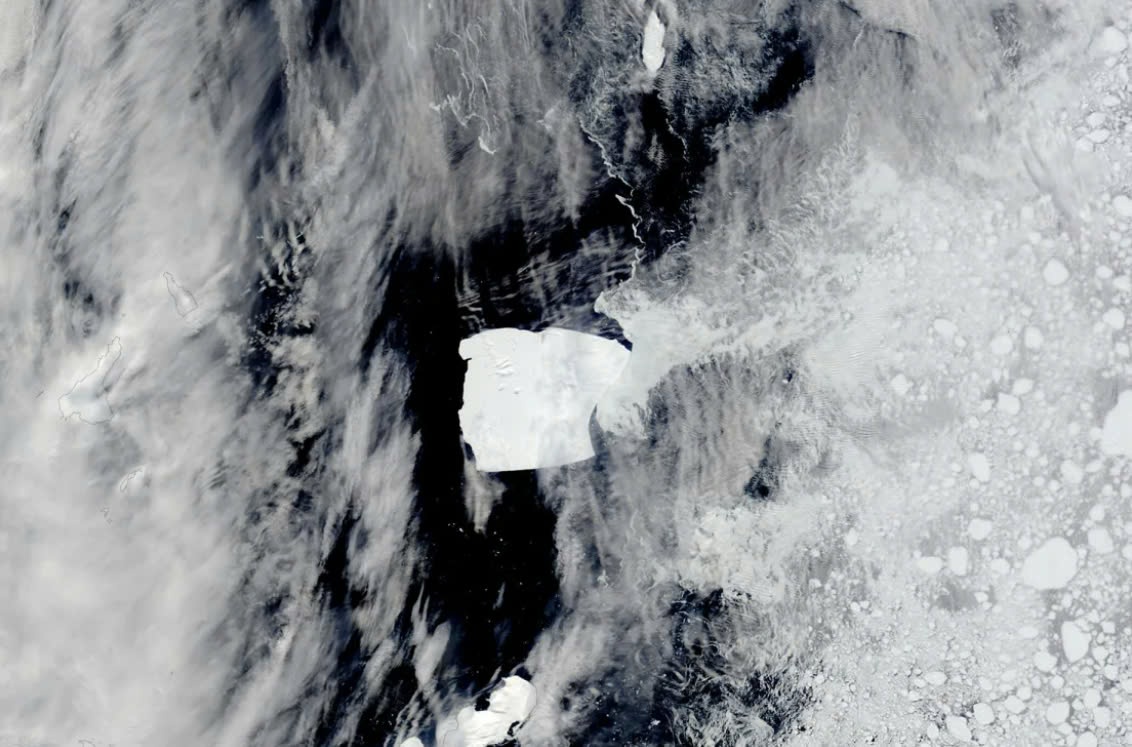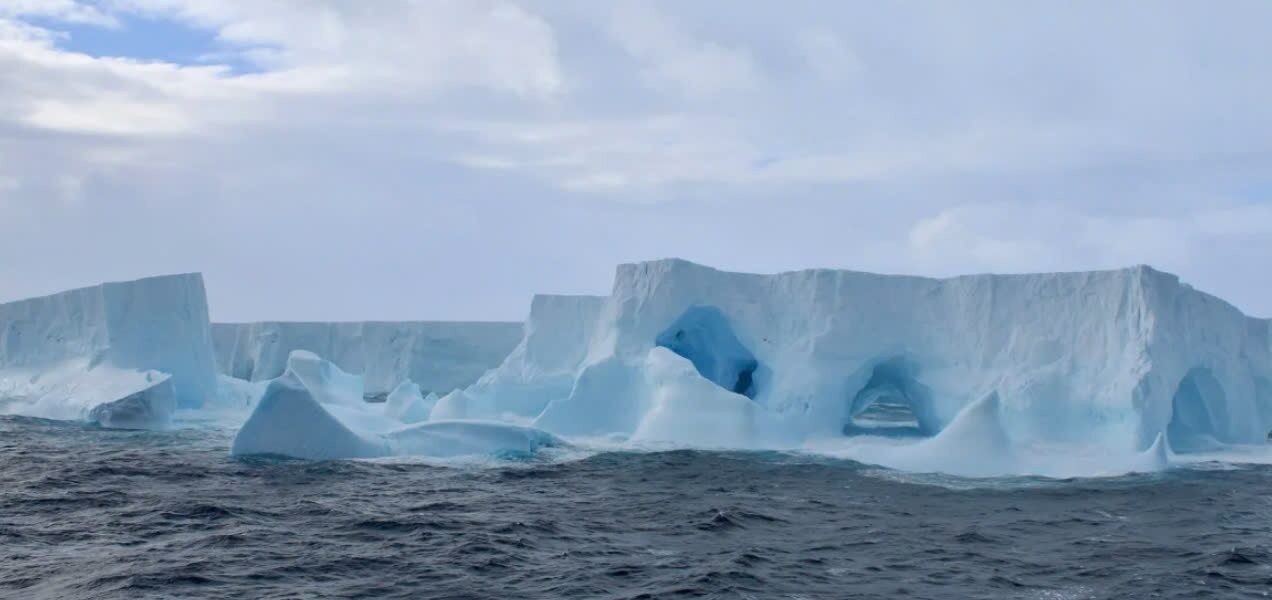A strange phenomenon
As the world’s largest iceberg, A23a has been of great interest to scientists, who have been monitoring the mass since it broke away from the Filchner-Ronne Ice Shelf in Antarctica in 1986.
The fate of the iceberg remains a mystery as it remains trapped in a rare situation that scientists say is unprecedented. “To the best of our knowledge, this has never happened before,” Dr. Les Watling, professor emeritus of life sciences at the University of Hawaii at Manoa, wrote in an email.
The 1,300-square-mile (3,672-square-kilometer) iceberg — twice the size of London — drifted past the seamount and became trapped in a phenomenon known as a Taylor column, a vortex of water caused by ocean currents hitting the seamount. The iceberg is currently rotating about 15 degrees a day in a cylindrical motion above the seamount, according to the British Antarctic Survey.
Experts say the iceberg is slowly melting but will not affect sea levels, but instead tells us more about the life cycle and how the climate crisis is affecting the Antarctic ice sheets.

Why is the giant iceberg “spinning”?
When the iceberg first broke away from the ice shelf in the 1980s, it didn’t travel far before becoming stuck in the Weddell Sea. More than three decades later, in 2020, it began drifting toward the world’s largest ocean current system, the Antarctic Circumpolar Current. But when it reached the current in the spring, instead of reaching the South Atlantic, its journey stalled again.
The iceberg is rotating slowly on a seamount called Pirie Bank Seamount, which is about 1,000 metres high. The iceberg, which measures about 61 kilometres by 59 kilometres, is slightly smaller than the mountain and “is in the right size position where it is held back by the Taylor column but doesn’t protrude too much. So it’s not easily pushed away,” said Dr Alexander Brearley, a physical oceanographer with the British Antarctic Survey.
The institute noticed the strange rotation on satellite imagery, which showed the iceberg stuck at a spot near the South Orkney Islands. Because it rotated so slowly, it was not noticeable.
“We have studied these Taylor columns before, not just to study icebergs, but because they are really interesting oceanographic phenomena and have important implications for ocean circulation,” says Brearley.
Meanwhile, Dr Watling said the conditions for a Taylor column must be “just right” to hold the giant iceberg. “Generally speaking, Taylor columns are formed when there is a balance between the moving water and the size and shape of the seamount… If the water is moving too fast, the eddies will flow downstream of the seamount. If the water is not moving fast enough, the water will flow around it,” he explained.
Are giant icebergs a danger?
As long as the iceberg remains stuck, it will melt more slowly than if it continued to drift. No matter where the ice melts, it will have no impact on sea levels, Brearley said.
He said the formation of ice shelves along the Antarctic coast was also a natural part of Earth’s existence and there was no urgency for any individual iceberg.
But the concern here is that the ice shelves in West Antarctica are getting thinner amid the climate crisis, which could cause more icebergs to float and lead to faster melting of terrestrial ice, thus raising sea levels.
“I don’t think we should be overly concerned about this,” says Brearley. “But in general, we should be concerned about icebergs – understanding their numbers, their origins, what they mean for the ice on land and their stability in the future.”

How long will this cycle last?
Advertisement
While researchers don’t know how long the iceberg will be spinning, Brearley pointed out in a January 2015 study that British Antarctic Survey researchers found a profiling buoy, a tool used to measure surface surface, that had been in the Taylor column for four years. The buoy is about the size of a human, so researchers didn’t think the iceberg would stay in the column that long.
“It’s possible that a combination of wind and current variations and the exact shape of the iceberg will cause it to move away from Taylor’s column. But we’re quite surprised that it’s lasted this long. So we’ll see,” he added.
Dr. Tony Koslow, an emeritus oceanographer at the Scripps Institution of Oceanography at the University of California, San Diego, said that because of the seamount’s large size, the iceberg could continue to rotate for a long time, even years.
Seamounts are known to be rich in marine biodiversity, as ocean currents flowing around the mounds create ideal conditions for invertebrates to cling to the mountains or for other species to feed on food particles carried by the currents, Koslow told CNN in a previous report.
Melting icebergs could influence these natural conditions, but more research is needed to know for sure, Watling said.
“I think it would reduce biodiversity in the water column but have a mild impact on marine life living on the seafloor. This iceberg is large enough to be involved in primary production like diatoms, which are produced when nutrient-rich water rises and feeds phytoplankton, so if that happens, the food supply would be reduced,” Watling said via email.
“I don’t see any reason to be concerned,” he added. “But it’s really great and proves once again what an interesting world we live in.”

